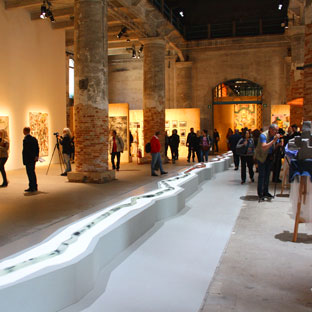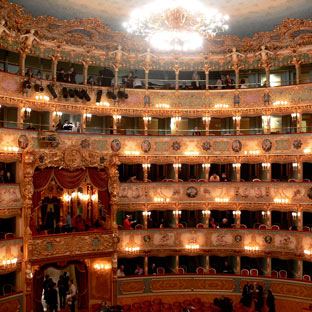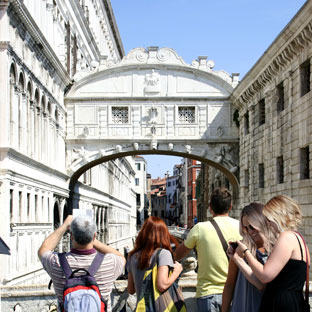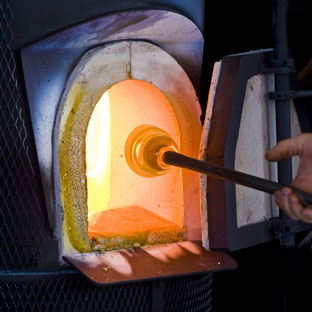Of course, Venice is not Disneyland, but it still offers many pleasant, fun, and educational child-friendly activities—and for the whole family!
The following are some suggestions and ideas for the families that visit Venice with their children: tried-and-true, fun, and safe activities and experiences for small groups or families. Either on your own or with specialized guides, all the initiatives are available both in the city and in the islands, and they are also suitable for children under 8 years—so that everyone in the family is definitely going to be happy!
Moreover, during the Venice Carnival, many activities dedicated to families and kids are available in town. Mask-making, theater, art and music workshops are organized by many artisan workshops and various institutions.
Among them, we like to mention Carnevale Internazionale dei Ragazzi by la Biennale di Venezia, on February Saturday 11, Sunday 12, Saturday 18 and Sunday 19, 2023, in Venice and Mestre. Reservation is required.
Activities in town
Macaco Tour offers various activities through which the youngest can enjoy visiting Venice, a city in which every view and every detail tells a story. Just like brave explorers, the group hunts for the ancient treasure of an enigmatic and mysterious city. The tours are fun to be enjoyed together, by the entire family, among campi, callette, historic landmarks, legends, and unique traditions.

Kids and families discovering Venice with Macaco Tour. Ph. Courtesy Macaco Tour
Among their tours, a fascinating, fun, and at the same time educational experience is the Treasure Hunt in Cannaregio district, through which the group will discover a more authentic Venice, away from noise, and during which the participants can immerse themselves in the magical lagoon atmosphere. Between the picturesque Jewish Ghetto and the popular Fondamenta della Misericordia, with map and clues and with the help of your guide, you will discover strange characters and mysterious legends.
Further information at: macacotour.com/caccia-a-tintoretto
Visith the website to learn more about the many initiatives available: macacotour.com
ARTICLE CONTINUES AFTER ADVERTISEMENT
EXPLORING VENICE BY BOAT, FOR CHILDREN AND TEENAGERS
Venice On Board is a no-profit, nonprofessional sports association that aims to preserve the maritime traditions of Venice. They rescue and restore ancient Venetian boats that are then used for rowing lessons of voga alla veneta and lug sailing to people of all ages and from all over the world. Rowing and sailing are experiences which allow the opportunity to find again some sort of balance between humans and nature—in this case, the nature that, for centuries, has been an important heritage for Venice. Their activities include also tours around the city and the lagoon, which are suitable for families with children and in which Venice can be discovered from a different perspective, thus having fun while trying your hand at the most traditional “art of the oar.”
Further information at: www.veniceonboard.it

A kayak tour in the lagoon with Venice Kayak. Ph. Courtesy Venice Kayak
On the island of Certosa, Classic Boats Venice rents small electric-powered boats with Gps for wonderful trips in the lagoon with your family (no license required).
Moreover, sports people will definitely like Venice Kayak, which rents also light kayaks with many seats, perfect to have fun with children, gliding peacefully over the lagoon. Guide and assistance services are also available.
Further information on the websites: www.classicboatsvenice.com and www.venicekayak.com
FAMILY ACTIVITIES OFFERED BY MUSEUMS
Every Sundays, from 3.00pm to 04.30pm, Kids Day offers free laboratories for kids aged from 4 to 10 years old, organized by the Peggy Guggenheim Collection. “Alchemical” experiments, how to paint a dance, how to craft a tree, accidental art: these are just a few of the amazing and unmissable labs in which children can have the opportunity to have fun, while adults can visit the Guggenheim Collection.
Check the museum’s website for dates and times: www.guggenheim-venice.it/en/learn/activities-for-families
The City Museums-MuVe (among the others, Palazzo Ducale, Museo Correr, Ca’ Rezzonico–Museo del settecento veneziano, Ca’ Pesaro-Galleria Int.le d’Arte Moderna, Palazzo Mocenigo, Museo del Vetro Murano) present several on-demand activities for kids and families. They are available in many languages, in any opening day at any opening time. Tickets are available on www.ticketlandia.com/m/muve
Among the many activities, you can try one of the following three, but we suggest to visit the page www.visitmuve.it/en/educational-services/for-families/ to see the complete list of the activities and the costs.
Ca’ Rezzonico – How does Venice works?
How was Venice made, and how this wonderful city works? Why is there a wellhead in every square? Why do the chimneys have such bizarre shapes? How do the houses and palaces stand in the water? The answers to these and many other questions will be found thanks to a special path of the visit, which include some exclusive and privileged observation points and a final game.
Duration: two hours.
Languages: Italian, English, French.
For families with children aged 8-14.
Correr Museum – The Art detective
Children engage with the Picture Gallery of the Correr Museum in a playful manner. Story-telling opens the way to the discovery of details and the solution of puzzles, all of which teach the children how to look at pictures and understand them.
Duration: one hour and 30 minutes
Languages: Italian, English, French.
For families with children aged 6-12.
Doge’s Palace – The Lion Hunt
What better than a lion, the very symbol of Venice, to lead children on a most unusual trip around the Doge’s Palace?! In this ‘lion hunt’ they must find various painted and sculpted depictions of the animal throughout the Palace, and “win” some items that, put together, will result in a lion-like surprise to take home.
Duration: one hour and 30 minutes.
Languages: Italian, English, French, Spanish, Russian.
For families with children aged 5-10.

The Doge pays homage to the Winged Lion. “Porta della carta”, Palazzo Ducale. © Ph. L. Bosello.
CHILD-FRIENDLY MUSEUMS
The Natural History Museum Giancarlo Ligabue can amaze and attract children and teenagers as well as adults. The museum is named after Giancarlo Ligabue, a Venetian businessman but first and foremost an archeologist, paleontologist, and naturalist who was the president of the museum for thirty years. Ligabue donated hundreds of finds to the museum, among which is the complete skeleton of a dinosaur discovered in the Sahara desert in 1973.
Times and information are available here: msn.visitmuve.it

One of the halls of Procuratie Vecchie, The Human Safety Net. © Ph. Riccardo Gelli – Live Venice
A must-see both for grownups and children is the stunning architectural and conservation work of the Procuratie Vecchie in Piazza San Marco by The Human Safety Net, which brought back to light and made accessible again a space which is also the historic headquarters of the Assicurazioni Generali. A notable restoration work in a location where it is no possible to visit the permanent exhibition A World of Potential, an interactive path able to engage and excite all kids. Here, children can also enjoy an entire library dedicated to them and created by Biblioteche senza Frontiere (Libraries Without Borders) and by the Centro per la Salute del Bambino (Center for Children’s Health), one of the NGO partner of The Human Safety Net in Italy. The library has a rich section in five different languages for the young and the very young. Another important thing to know is also that half of the price of the ticket is allocated to support the programs of The Human Safety Net. At the end of the exhibition path, visitors can have more information on the activities carried out by the Foundation and decide whether they prefer to devolve the half of their ticket to the family project or to the refugees project.
Tickets are available at: www.thehumansafetynet.org
For further information on the projects: www.thehumansafetynet.org/it/programmes
Another interesting place to visit with kids (minimum age 6 years old) in Piazza San Marco is the Clock Tower, an architectural masterpiece inaugurated in 1499. Visiting the tower is possible only upon reservation and with an authorized guide. The itinerary goes through the five floors of the tower and allows visitors to look closely at the complex and enormous clockwork, the wooden statues of the Three Wise Men and of the Angel, as well as the two precious doors from which, on the days of Epiphany and of the Ascension, the statues go out on a procession. Last but not least, the view from the terrace is, of course, no less than breathtaking!: torreorologio.visitmuve.it

A hall of the toys museum Creature di Gomma – Venice Vintage Toys. Ph. Courtesy Creature di Gomma
Creature di Gomma – Venice Vintage Toys, in Calle de la Vida 2390/A, just a few steps from the Scuola Grande of San Giovanni Evangelista, is another gem not to be missed. The exhibition was born from an idea of Venetian collector Fabrizio Fontanella, who opens to the public his private collection of vintage puppets and toys from the Sixties, Seventies, and Eighties—one of the most important in the world. Today, the collection has more than 5.000 pieces, among which are action figures made in rubber, vinyl, plastic materials, and which size ranges from 3 cm to 2 mt. More common and famous characters are side by side with the rare ones, those almost impossible to find, with a particular interest in the world of Carosello, accompanied by audiovisual and paper supports, as well as vintage gadget.
Times and other information are available on the website: www.creaturedigomma.com
The Naval History Museum of Venice is the most important museum of its kind in Italy and it is a destination much appreciate by both the young and the very young. Located in a fifteenth-century palace near the Arsenale—which used to be the “granary” of the Serenissima—it is a place where to admire boats of many and different kinds, period, and provenance. But not only! The exhibition space goes through five floors, for a total of 42 rooms, and it includes also the Padiglione delle Navi, located in the ancient “oar workshop” of the Arsenale. It is the perfect place to immerse yourself in the maritime culture of Venice, Italy, and of the world.
Further information on the website: www.visitmuve.it/it/musei/museo-storico-navale
CURIOUS PLACES AND OPEN-AIR DISCOVERIES

Labirinto Borges, San Giorgio island. Photo by Laura Dominguez
If you wish to “get lost” safely with your children, we recommend going to the island of San Giorgio, just in front of piazza San Marco. After climbing the bell tower—much less crowded than that of San Marco—to enjoy the view on San Marco basin, we suggest that you visit the Borges Labyrinth, a true green maze garden, designed in honor of the renowned Argentinian writer Jorge Luis Borges. You are sure to have a fun time!
Visit the website for times and information: www.visitcini.com

The Lions of Piraeus at the entrance of Arsenale. © Ph. Leonardo Bosello
If you are in Castello district, go to see the Lions of Piraeus: four giant and fascinating statues of lions guarding the entrance of the Arsenale—the ancient army complex of the Serenissima and the first industry or production and assembly line of the world. The lions are originally from Piraeus and arrived in the lagoon in 1688, as spoils of war.
In Piazza San Marco, when the clock strikes the hour, look up to find the Mori di Venezia (“Moors” of Venice), who literally strike the hours with their mallets on the terrace of the Clock Tower. Actually, the “moors” are not black. Venetians call them so because of the oxidation caused by the weather conditions on their bronze surface over the centuries. One has a beard and a serious appearance is called “The Old Moor”: he strikes the time two minutes before the hour and thus represents the time past. “The Young Moor” has no beard, a promising young man whose strikes resound two minutes later instead, symbolizing the time future.

Calle Varisca, Cannaregio district. © Ph. Leonardo Bosello
Would you like to see the narrowest calle in Venice? Only 53 cm wide, calle Varisca, near campo San Canciano, Cannaregio district, is undoubtedly the narrowest alley in the city! Fortunately, it is not very busy…

The grotesque “Mascheron” in campo Santa Maria Formosa. © Ph. Leonardo Bosello
If you wish to wander around the city looking for curiosities, we suggest that you go looking for three of them in particular:
-The Mephistophelian Lion in Cannaregio. In calle Diedo, on the palace of the same name you will find a marble mephistophelian lion with bat wings!
-The marble capitals at Rialto fish market are fun and interesting both for children and grownups: each depicts a different fish species of lagoon.
-The grotesque “Mascherone” (“large mask”) standing above the small door of the bell tower of the church of Santa Maria Formosa, and which was placed there in order to prevent the devil from entering and ringing the bells as he wanted, creating disorder in the everyday life of the city.
YOUR KIDS ARE BOOK-LOVERS? HERE ARE THE PLACES JUST FOR THEM
In 1400, Venice welcomed some of the refugees from Magonza, the hometown of Gutenberg, one of the most important center for printing. The main Venetian printer was Aldo Manuzio, a publisher and humanist who became very famous in the city and then all over the world.
The Mini Museo della Stampa (sestiere Santa Croce) is an open exhibition space, where the history of printing is narrated, starting from its roots, from the xilography used to imprint decorations on textiles, to the modern techniques, including photography and computer graphics. The Mini Museo can be visited upon reservation. The visit lasts about 30 minutes, free offer.
Visit the website for information: doppiofondo.org/minimuseo-della-stampa/
The Casa di Leo (Leo’s Home) is a small space for children with books and gadgets located in Calle de la Mandola (San Marco 3718/C). The main character is Leo, a nice and playful little cat who welcomes the young guests to his place.For further information visit the website: leovenezia.com
The Libreria Marco Polo (Marco Polo Bookstore), in Campo Santa Margherita (Dorsoduro 2899), is an independent bookstore with many new and used books, among which is a large and interesting selection of illustrated books both for children and adults. Books in English (both new and used) are also available. More information on the website www.libreriamarcopolo.com
The Sullaluna libreria & bistrot in Fondamenta della Misericordia (Cannaregio 2535) is a bookstore and cafeteria/bar perfect for a pleasant break along the canal, either in the morning or in the evening. The bookstore is specialized in illustrated books for children and young adults, but it also has an interesting selection of books on illustration and design.
Facebook: @sullalunavenezia
GARDENS AND PARKS
Green areas in Venice are often hidden, and the many gardens and parks of the city are mainly private. However, there are various public parks with play areas for kids: Sant’Elena in Castello, Parco Savorgnan in Cannaregio (very close to the train station), Parco Villa Groggia in Cannaregio, too, in the area of Sant’Alvise.
CHILD-FRIENDLY CAFES AND BARS
There are various places that are safe for children—either because they are far from the water or because they have indoor gardens or courtyards. Here, parents can enjoy their coffee, aperitif, or lunch while children can have fun safely. The following list is just a short overview of these kind of places:

Combo, campo dei Gesuiti. © Ph. L. Bosello
Al Tappo bacaro with indoor courtyard in the Jewish Ghetto – Cannaregio
Birreria Pizzeria La Corte in campo San Polo – San Polo
Caffè Illy, with outdoor tables in the Royal Gardens – San Marco
Alla Serra dei Giardini, bar, flower shop, and educational space for schools, with a large garden – Castello
Combo, bar inside the cloisters of the former Oratory of the Crociferi, in Campo dei Gesuiti – Cannaregio
Unique experiences among the islands of the northern lagoon
Macaco Tour takes children and families on boat tours on a bragozzo—one of the largest traditional Venetian boats, safe and comfortable—offering watercolor and birdwatching activities. The tour ends in Burano where all the group participates in a treasure hunt, in which the “treasure” to be found is the house of Bepi Suà—hidden among the many colorful houses of the island.
Further information at macacotour.com
To archeology lovers, Venice and its 1600 years of history offer tours and itineraries perfectly suitable for children too, to have fun and learn about myths, legends, and history. The Associazione StudioD Archeologia—which has been promoting educational activities for primary and secondary schools for years—offers many excursions both in winter and summertime, with boat tours that reach also the National Museum of Altino and the Museum of Torcello.
Further information at www.studiodarcheologia.it
And if your kids are “always moving,” we recommend visiting the island of Sant’Erasmo, which has always been considered “The Garden of Venice,” for being, historically, the island dedicated to agriculture and animal farming. Actv water-bus line n. 13 goes to S. Erasmo from Fondamente Nuove stop.
Once there, visitors can rent bikes thanks to the City of Venice Bike Sharing service, available at “Chiesa” and “Capannone” water-bus stops. In Sant’Erasmo, visitors can enjoy a completely new experience and view of the lagoon, and maybe have lunch, to taste the delicious vegetables of the lagoon—in particular, when in season, Sant’Erasmo Violet Artichoke, a unique speciality.
Further information at www.myexperientia.it

Making a bead in Murano glass. Ph. Courtesy Monica Ferro
The island of Murano is renowned all over the world for glassmaking, and it offers the amazing opportunity to engage children in quite a unique activity. In the workshop of the kind and creative Monica Ferro, the can learn how to create, with their own hands, a bead made of the world’s most precious glass. Parents: are you ready to confront yourself with your kids?
Usually, for children under the age of 8 the laboratory focuses on mosaics, for older children it is on glass beads. Further information at: www.ferrovetro.com










